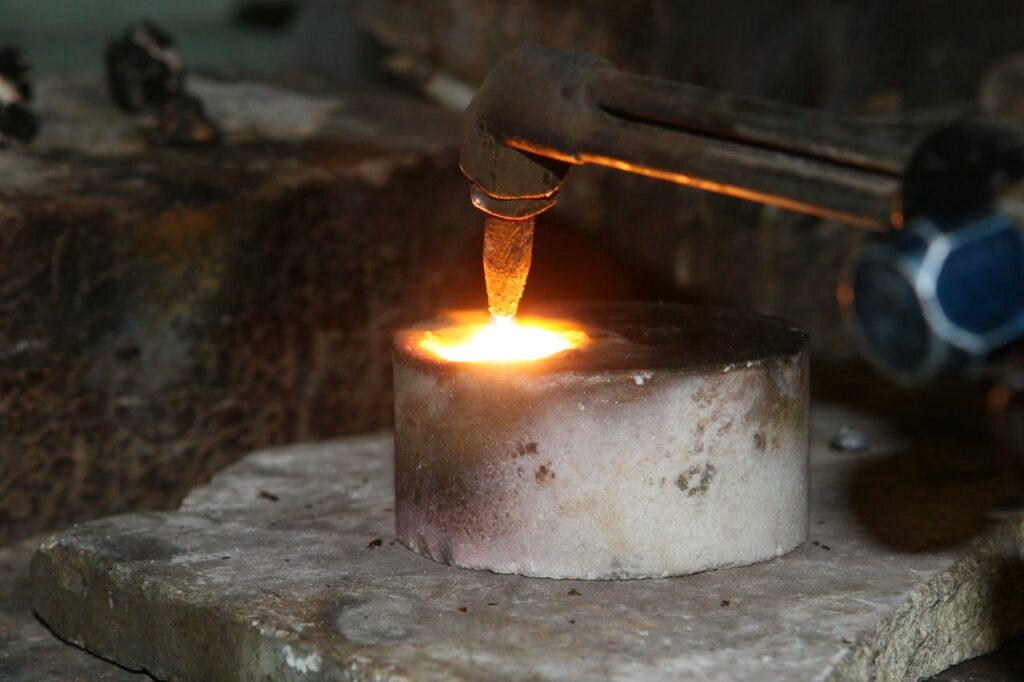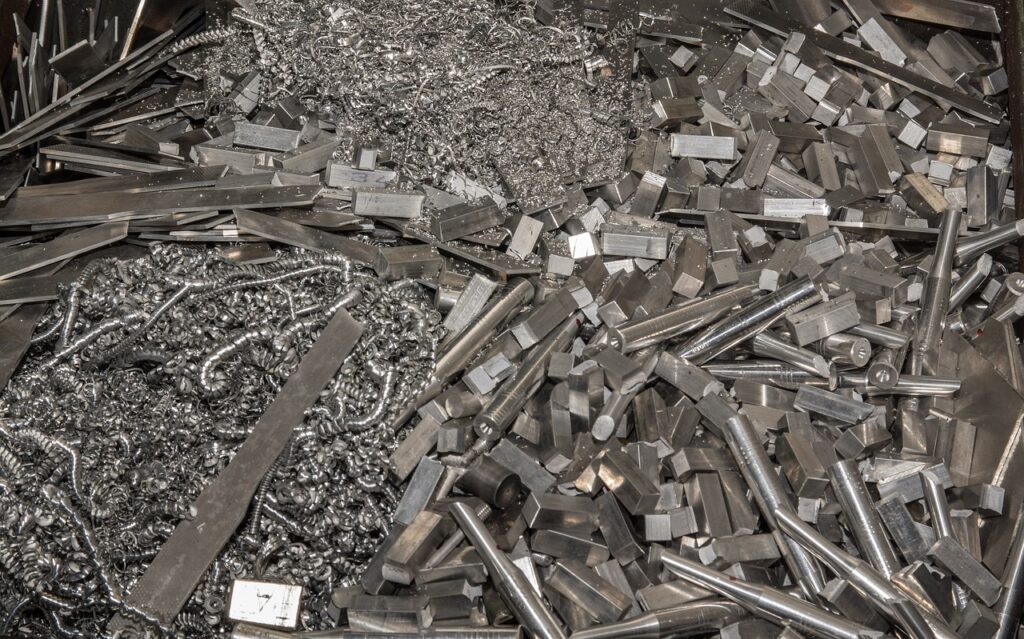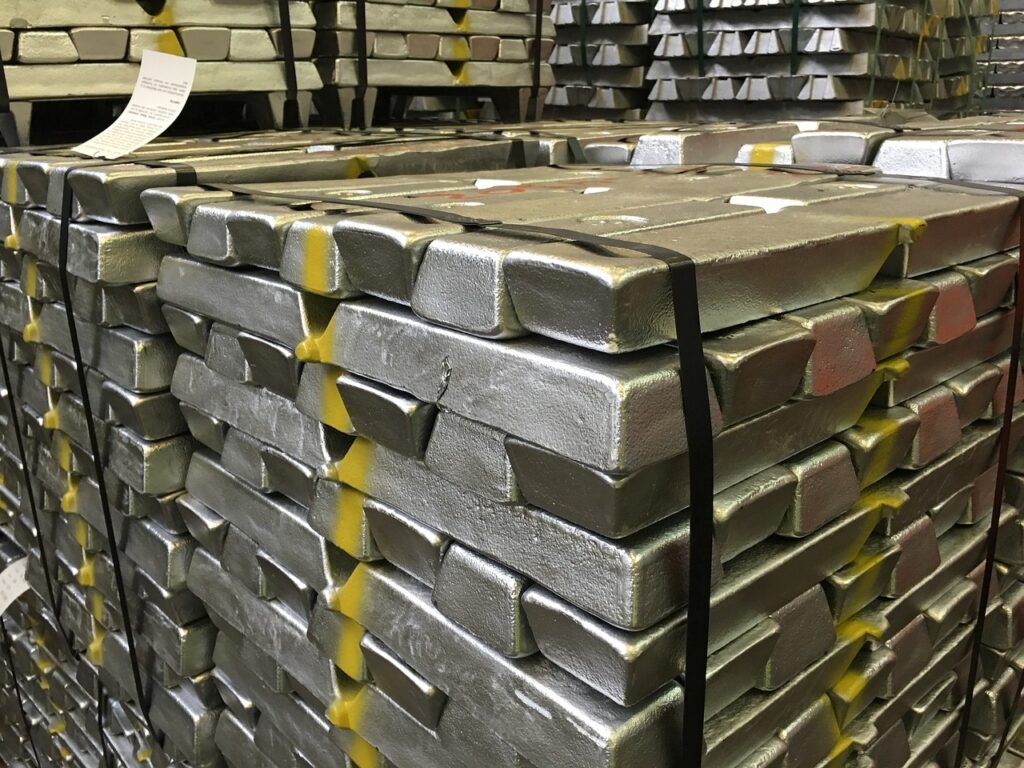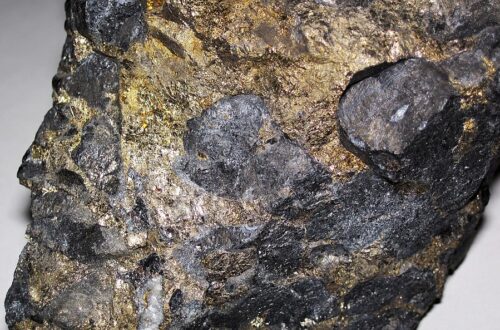
Fascinating Facts About Aluminum (The Best 61)
Facts About Aluminum: The Lustrous Lightweight Metal
Aluminum, often recognized for its shimmering appearance and incredible light weight, is a metal with a myriad of applications and a history rich with discovery. However as the third most abundant element in the Earth’s crust, it’s no surprise that aluminum has left a remarkable footprint in our daily lives. Whether in the kitchen as aluminum foil or as window frames enhancing the aesthetics of homes, its influence is undeniable. Here, we delve into some of the most interesting facts about aluminum and its journey from the depths of the earth to its widespread use today.
Aluminum’s Illustrious History
Ancient Times to Napoleon III
The journey of aluminum is fascinating, dating back to ancient times. While the ancient Greeks recognized aluminum compounds, they never saw the metal in its pure form. Their term “bitter salt” referred to aluminum oxide. In fact, aluminum was once considered a precious metal, so much so that Napoleon III of France boasted aluminum plates at state dinners!
19th Century Discoveries
The modern era of aluminum began in the 19th century. Danish chemist Hans Christian Oersted is credited with extracting pure aluminum for the first time in 1825. A few decades later, the Hall-Héroult process made the mass production of aluminum possible, transforming it from a metal of kings to a metal for the masses.
Aluminum in the Modern World

Widely Used and Recycled
Firstly, one of the fun facts about aluminum is its title as the most widely used metal on Earth, surpassed only by iron. From soda cans to aerospace applications like solid rocket boosters for the space shuttle, aluminum’s versatility is unparalleled. Did you know that a new can made from recycled aluminum requires 95% less energy than creating one from raw materials?
Aluminum and the Wright Brothers
Highlighting its light weight and strength, aluminum played a pivotal role in the first successful flight by the Wright brothers. This metal was key in ensuring the engine was light enough, and yet powerful, to lift the aircraft off the ground.
Uniqueness of Aluminum’s Properties
Nature’s Gift to Industry
Being the third most abundant element, aluminum’s presence in the Earth’s crust is significant. But what makes it an industry favorite? Its low density and high corrosion resistance make it an ideal material for various applications. Pure aluminum, for instance, creates a thin layer of aluminum oxide on its surface, preventing further corrosion.
A Marvel of the Periodic Table
With an atomic number of 13, aluminum stands out on the periodic table. Its unique electron configuration gifts it with both excellent electrical and thermal conductivity. This is why aluminum is so commonly used in electrical transmission lines and various thermal applications.
FAQs Around Facts About Aluminum
Why was aluminum considered a precious metal in ancient times?
It was rare to see aluminum in its pure form during ancient times, making it highly valuable.
How has aluminum influenced modern transportation?
Due to its light weight and strength, aluminum has enhanced fuel efficiency in vehicles, reducing needed horsepower.
What role does aluminum play in the renewable energy sector?
Aluminum’s light weight and durability make it perfect for structures like solar panels, promoting sustainable energy solutions.
Facts About Aluminum Conclusion
Aluminum’s story is as multifaceted as the metal itself. From the ancient Greeks’ first encounters with its compounds to its pivotal role in aviation and beyond, facts about aluminum continually amaze and inspire.
[Source: American Chemical Society]
Delving into Aluminum’s Versatility

From Kitchen to Cosmos
When you think of aluminum, the first image that might spring to mind is that of aluminum foil. This household staple is just a tiny fraction of aluminum’s myriad uses. Its light weight makes it an ideal material for kitchen utensils, ensuring they are both durable and easy to handle. But its reach goes far beyond the kitchen. Consider the space industry: the same material that wraps our sandwiches is also a core component of solid rocket boosters propelling shuttles into the cosmos!
Architecture and Design
Window and door frames made from aluminum aren’t just about aesthetics. They offer corrosion resistance, ensuring longevity even in harsh weather conditions. Moreover, aluminum’s flexibility in design makes it a favorite among architects, allowing them to sculpt their visions effectively.
Aluminum in the Transportation Industry
Cars, trains, and airplanes are reaping the benefits of aluminum. Its low density translates into reduced weight, boosting fuel efficiency. For instance, every 10% reduction in vehicle weight results in a 5-7% reduction in fuel consumption. The transportation industry, always on the hunt for ways to be more sustainable, finds a friend in aluminum.
Aluminum’s Environmental Footprint
The Circular Economy of Aluminum
Aluminum’s story in the circular economy is commendable. Nearly 75% of all aluminum produced in the United States is still in use today, thanks to recycling. A soda can you toss into the recycling bin today could be back on the shelf as a new can within just 60 days!
Sustainable Production
Producing new aluminum from bauxite ore requires significant energy. However, the recycling process reduces the energy demand by a whopping 95%. This not only conserves energy but also cuts down on carbon dioxide emissions, making aluminum production more environmentally friendly.
The Science Behind Aluminum

From Bauxite to Beverage Cans
Bauxite ore is the primary raw material for aluminum production. It is refined into alumina or aluminum oxide, which is then smelted to produce pure aluminum. Interestingly, the Hall-Héroult process, developed in the late 19th century, remains the primary method for aluminum smelting to this day.
Aluminum’s Unique Characteristics
Aluminum stands out for its corrosion resistance, a result of the protective oxide layer it forms when exposed to air. This trait ensures that products like aluminum window frames or door frames last longer with minimal maintenance. Furthermore, aluminum’s high thermal and electrical conductivity makes it invaluable in industries ranging from electronics to food packaging.
Aluminum Cans: The Eco-friendly Choice
Aluminum cans, a ubiquitous presence in our daily lives, are much more than just convenient containers for our favorite beverages. Crafted from a material that combines lightness with strength, these cans exemplify sustainability at its finest. Remarkably, aluminum retains its properties indefinitely, allowing for continuous recycling. This means that the soda can you recycle today could be back on the shelf in a mere 60 days, showcasing a circular economy in action. Moreover, recycling aluminum cans consumes a mere fraction—about 5%—of the energy needed to produce them from raw bauxite ore, making them not only a practical choice but an environmentally responsible one.
Aluminum’s Cultural Impact

Sir Humphry Davy and Naming the Element
While the Latin word for alum gave rise to the name aluminum, its nomenclature journey was quite eventful. Sir Humphry Davy, the English chemist, initially named it “alumium” in 1808, which eventually evolved into “aluminum” and the British-preferred “aluminium.”
Aluminum’s Prestige in the 19th Century
In the 19th century, aluminum was more valuable than gold and silver, primarily because it was challenging to extract in its pure form. This prestige led to its use in special projects, like the 6-pound aluminum apex that sits atop the Washington Monument, signifying its importance during that era.
FAQs Around Facts About Aluminum
What’s the difference between aluminum and aluminium?
Essentially, both terms refer to the same chemical element. While “aluminum” is more commonly used in the United States, “aluminium” is preferred in many other parts of the world.
How does aluminum’s light weight compare to steel?
Aluminum weighs approximately one-third the weight of steel, making it a preferred choice for applications where reducing weight is crucial.
Aluminum’s Many Forms and Compounds
Aluminum Alloys
Pure aluminum, while having many notable properties, often gets alloyed with other metals to enhance specific characteristics. In fact Aluminum alloys are pivotal in industries ranging from aviation, where they reduce weight without compromising strength, to everyday items like soda and beverage cans.
Aluminum Oxide and Its Significance
Aluminum oxide, often referred to as alumina, is a white, crystalline powder that is used as a base for fabricating aluminum. Beyond this, its abrasive qualities make it an essential ingredient in various products, from sandpapers to grinding wheels. Additionally, aluminum oxide is an electrical insulator but has a high thermal conductivity, making it useful in the electronics industry.
Other Compounds: From Clays to Cosmetics
Aluminum compounds have been in use since ancient times. The ancient Greeks used alum, a compound of aluminum, as a fabric dye and for medicinal purposes. Aluminum chloride is another essential compound used in cosmetics and antiperspirants due to its ability to block sweat glands.
Pioneers in Aluminum Research and Development
Danish Physicist Hans Christian Oersted
As previously mentioned, Oersted was the first to produce tiny amounts of aluminum in 1825. While his method was not commercially viable, it set the stage for future discoveries and cemented his place in the annals of aluminum’s history.
The Hall-Héroult Process
Named after Charles Martin Hall of the United States and Paul Héroult of France, this process is still the primary method of producing aluminum today. These two inventors, working independently but simultaneously in 1886, revolutionized the aluminum industry, making the metal affordable and widely accessible.
Aluminum in the 21st Century

Aluminum in Renewable Energy
Aluminum’s corrosion-resistant properties and light weight make it a top choice for renewable energy projects, especially in solar panels. These panels require sturdy, lightweight frames to house the solar cells, and aluminum fits the bill perfectly. The metal’s reflective properties also enhance the efficiency of solar concentrators.
The Automotive Revolution
The transportation industry is continuously evolving, and aluminum plays a pivotal role. As the push for fuel efficiency becomes stronger, manufacturers are turning to aluminum for its weight-saving properties. Engine blocks, chassis components, and even body panels are now being forged from aluminum alloys, offering the dual benefits of fuel economy and enhanced performance.
Aluminum in the Tech World
From smartphones to laptops, aluminum is the go-to material for tech giants looking for a blend of durability, aesthetics, and light weight. Its high thermal conductivity ensures devices remain cool during operation, while its aesthetic appeal gives gadgets a premium look and feel.
The Future of Aluminum

A Push Towards Sustainability
The aluminum industry is keenly aware of its environmental responsibilities. Efforts are underway to further reduce the carbon footprint of aluminum production, with research focusing on using renewable energy sources and improving the recycling process.
Innovations in Aluminum Products
Recent years have witnessed the rise of transparent aluminum, a ceramic material that is both transparent and incredibly hard. While it might sound like science fiction (and indeed, it was once featured in a Star Trek film!), this material has potential applications in bulletproof windows and even aerospace.
FAQs Around Facts About Aluminum
Is aluminum safe for food packaging?
Yes, aluminum is widely used in the food industry, especially for packaging. Aluminum foil and cans are common, and they pose no harm when in contact with food.
How is aluminum contributing to the circular economy?
Aluminum is infinitely recyclable, meaning it can be repurposed without loss of quality. This trait plays a significant role in promoting a sustainable, circular economy.
The Enduring Myths Around Aluminum
Aluminum and Health Concerns
Over the years, there have been concerns about aluminum’s potential health impacts, especially when used in cookware or antiperspirants. It’s essential to note that while aluminum compounds can be absorbed by the human body, the amounts are minuscule and typically expelled quickly. The consensus among health professionals is that everyday exposure to aluminum poses no significant health risk.
Aluminum and Memory
A common myth links aluminum to Alzheimer’s disease. Numerous studies have investigated this claim, and the overwhelming evidence suggests there is no concrete link between aluminum exposure and Alzheimer’s development.
How Aluminum Shapes Our Everyday Lives

In Our Homes
It’s astonishing how omnipresent aluminum is in our households. From electrical wiring that powers our devices to kitchen utensils and foil that assist our cooking endeavors, aluminum’s versatility shines through.
Transportation
As previously highlighted, aluminum’s lightweight nature is revolutionizing the transportation sector. But it’s not just about cars or planes; even bicycles benefit from aluminum frames, offering riders a blend of strength and agility.
Art and Design
The malleability of aluminum makes it a darling among artists and designers. From sculptures gracing city squares to minimalist furniture designs, aluminum’s imprint on the world of art and aesthetics is undeniable.
Aluminum’s Economic Impact
Job Creation
According to the Aluminum Association, the aluminum industry supports over 160,000 direct jobs in the United States alone. When considering the broader supply chain, including recycling and ancillary services, the number grows exponentially.
Contribution to GDP
In countries with significant bauxite reserves and advanced refining capacities, aluminum production is a substantial contributor to the GDP. The industry also attracts foreign investment, enhancing economic stability.
Promoting Trade
Aluminum is among the most traded commodities globally, promoting economic ties between nations and fostering international cooperation.
Challenges Facing the Aluminum Industry

Environmental Concerns
While aluminum recycling is exceptionally energy-efficient, producing primary aluminum is energy-intensive. In fact the industry faces challenges in reducing its carbon footprint and ensuring sustainable practices across the production chain.
Market Fluctuations
Like any commodity, aluminum is subject to market fluctuations. Variability in demand, geopolitical tensions, or changes in energy prices can impact its global pricing.
Innovation and Competition
As industries evolve, there’s a continuous push for materials that are lighter, stronger, or more cost-effective. Certainly the aluminum industry needs to innovate continually to stay ahead of competing materials and meet changing market demands.
Wrapping Up: Aluminum’s Timeless Appeal
The Evergreen Metal
From ancient times when the Greeks and Romans used its compounds, to today’s high-tech applications, aluminum’s appeal has endured and grown. Its unique combination of lightness, strength, and versatility ensures it remains central to our modern world.
Looking Ahead
As research progresses and technology evolves, aluminum’s potential applications only seem to expand. Whether it’s in space exploration, sustainable energy, or everyday items, aluminum’s story is far from over.
FAQs Around Facts About Aluminum
Why is aluminum used in electrical transmission lines?
Aluminum is preferred in electrical transmission lines due to its blend of electrical conductivity and lightness. It can carry electricity efficiently over long distances without sagging under its weight.
Are there any alternatives to aluminum in its primary applications?
While there are alternatives, such as steel or copper in specific applications, aluminum often provides a superior balance of properties, making it the material of choice.
Aluminum’s Role in Science and Technology

Space Exploration and Aluminum
Firstly, aluminum has been instrumental in space exploration endeavors. Also the material’s light weight and strength make it ideal for spacecraft construction, where every gram matters. Solid rocket boosters, for instance, have utilized aluminum powder as fuel, highlighting its versatility even beyond structural applications.
Telescopes and Observatories
The manufacturing of telescopes, especially those used in major observatories, often incorporates aluminum. The metal’s reflective properties, combined with its ability to resist corrosion, ensures that these instruments provide accurate observations over extended periods.
Electronics and Computing
Aluminum’s thermal conductivity is a boon for electronics. As a result devices become more powerful and compact, effective heat dissipation becomes crucial. Also aluminum cases and heat sinks help manage this heat, ensuring longevity and performance.
Aluminum and the Environment
Aluminum’s Recycling Potential
One of the standout facts about aluminum is its recyclability. An aluminum can, once recycled, can return to a store shelf as a new can in as little as 60 days. Additionally, recycling aluminum uses 95% less energy than producing it from raw materials.
Aluminum and Renewable Energy
Aluminum plays a part in the shift towards renewable energy. But beyond its role in solar panels, aluminum is used in wind turbine constructions, contributing to the global push for sustainable energy sources.
The Bauxite Ore Connection
Bauxite ore is the primary source of aluminum. Sustainable and responsible mining of this resource ensures that the environmental impact remains minimal and that the lands are restored post-mining.
You will also find my article “The Best 16 Interesting Facts about Palladium Revealed!” of interest too.
Cultural and Historical Highlights
Napoleon III and Aluminum’s Prestige
In the 19th century, aluminum was considered a precious metal due to its rarity and the difficulty in producing it. Napoleon III of France is said to have boasted aluminum plates and cutlery for his esteemed guests, highlighting the metal’s prestigious stature during that era.
Wright Brothers and Flight
The Wright brothers, pioneers of aviation, recognized aluminum’s potential early on. Furthermore they used an aluminum engine in their first successful flight, emphasizing the metal’s contribution to aviation history.
Aluminum’s Role in Landmarks
The tip of the Washington Monument, a famed U.S. landmark, is made of aluminum. Besides, at the time of its installation in the late 19th century, it was a symbol of wealth and technological progress.
Concluding Insights: Aluminum in Perspective

A Metal Shaping Civilization
From ancient civilizations using its compounds to modern societies building skyscrapers, airplanes, and intricate machinery, aluminum’s journey has been intertwined with human progress. Its properties have catered to the evolving needs of humanity, solidifying its role in our shared history.
Embracing the Future
With advancements in research and technology, the future promises even broader applications for aluminum. Its eco-friendly nature, combined with its unique characteristics, ensures that aluminum will continue to be at the forefront of innovation and development.
FAQs Around Facts About Aluminum
How is aluminum’s atomic structure responsible for its properties?
The electron configuration of aluminum contributes to its properties like malleability, conductivity, and reactivity. Its atomic number is 13, and it has three valence electrons, making it inclined to lose those electrons and form compounds.
What makes aluminum an ideal material for kitchen utensils?
Aluminum’s excellent heat conductivity ensures even cooking. Its resistance to corrosion means it doesn’t rust or degrade easily, ensuring longevity and safety in kitchen applications.





One Comment
Pingback: